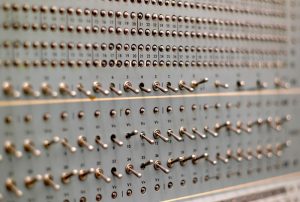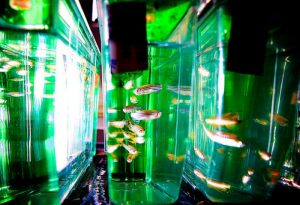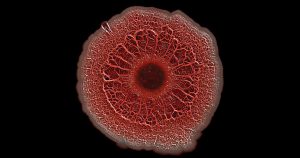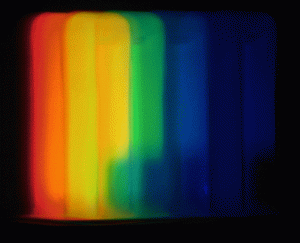Enter your address to receive notifications about new posts to your email.
Articles tagged Yeast
(40 results)
-
Seeking the flaw in error-prone DNA polymerases
Yeast study suggests faulty proofreading is not to blame for link between cancer and DNA polymerase ε variants. Accurate DNA replication is a matter of life and death. The polymerases responsible for replicating DNA have built-in safeguards to defend genome integrity, including proofreading activities to correct their own errors. Abnormally error-prone variants of DNA polymerase…
-
A CRISPR shortcut for switching yeast mating types
Wild yeast aren’t picky about their mates. For Saccharomyces cerevisiae, setting the mood is as simple as providing an abundant supply of nutrients, which prompts each yeast cell to search for another of the opposite mating type. If a lonesome yeast cell can’t find a suitable partner, it’s no problem—it can alternate between mating types,…
-
From fish tank to bedside
Yeast and zebrafish are among the lab organisms being recruited to the search for rare disease cures. Rare diseases are not so rare. About 300 million people worldwide live with the more than 7000 individual diseases that are designated “rare” by the US government. But because each of these affect so few individuals, the usual…
-
How baker’s yeast turns from friend to foe
Beer, doughnuts, and genetics textbooks have one thing in common: they were all made possible by collaborations between humans and yeast. Our fungal ally Saccharomyces cerevisiae resides not only in breweries, bakeries, and laboratories, but also sometimes in our own bodies—where, on rare occasions, it betrays us. S. cerevisiae is increasingly being reported as an…
-
Benign yeast turn into filamentous pathogens in different ways
The yeast Candida albicans lives on and even inside many of us. Most of the time, its silent presence goes unnoticed, but this fungus can turn on its host, causing infections ranging in severity from annoying to life-threatening. For the yeast to become pathogenic, some of the C. albicans must transform from small, round cells…
-
An extra chromosome that does double duty
Inheriting an extra chromosome can sometimes be disastrous, but in the September issue of G3, Linder et al. investigate a chromosome duplication that helps yeast survive harsh conditions. Yeast with an extra copy of chromosome IV better tolerate hydrogen peroxide exposure, largely thanks to an extra copy of a gene that detoxifies the chemical. This…
-
Switching biofilm formation on and off in yeast
When a group of microorganisms needs to stick together, they build a biofilm. The cells cement themselves together onto a surface, forming durable structures that are notoriously hard to remove. In a medical setting, biofilms can contribute to dangerous antibiotic resistance. In the August issue of G3, Cromie et al. use a yeast model to…
-
Neural networks dive deep to locate proteins
As in real estate, so in cell biology: location is key. Knowing where a protein localizes in a cell gives insight into its function, and new research published in G3 describes a method to accurately identify a protein’s subcellular localization through high-throughput microscopy and machine learning. To determine a protein’s subcellular localization, researchers can tag…
-
The push-and-pull evolution of tandem-duplicated drug-resistance genes
Two highly similar genes that contribute to drug resistance in a pathogenic yeast have been co-evolving as tandem duplicates for the past 134 million years—while maintaining distinct functions. This is the conclusion of a paper in the April issue of GENETICS by Lamping et al. that examines the evolutionary effects of ectopic gene conversion. Evolutionary…
-
Live long and prosper (under the right conditions)
Restricting calorie intake seems to promote longer lives in a wide range of organisms, from microbes to mammals. Some determined youth-seekers are already adopting reduced-calorie diets in an attempt to extend their lifespans. But it’s not clear yet that these anti-aging effects apply to humans, and the mechanisms by which they work in other organisms…
-
Snorkeling out of the membrane
One of the last places you’d expect to find a charged amino acid residue is buried within the hydrophobic interior of a lipid bilayer. And for the most part, this expectation holds true: portions of proteins that span membranes are typically composed of hydrophobic residues. But in some cases, the positively charged residues lysine and…







![Photo by publicdomainpictures.net. [CC0]](https://s43361.pcdn.co/wp-content/uploads/2017/09/red-doubledecker_770x-300x199.jpg)




![By National Park Service [Public domain], via Wikimedia Commons.](https://s43361.pcdn.co/wp-content/uploads/2017/03/biscayne_np_snorkeling-1-300x214.jpg)